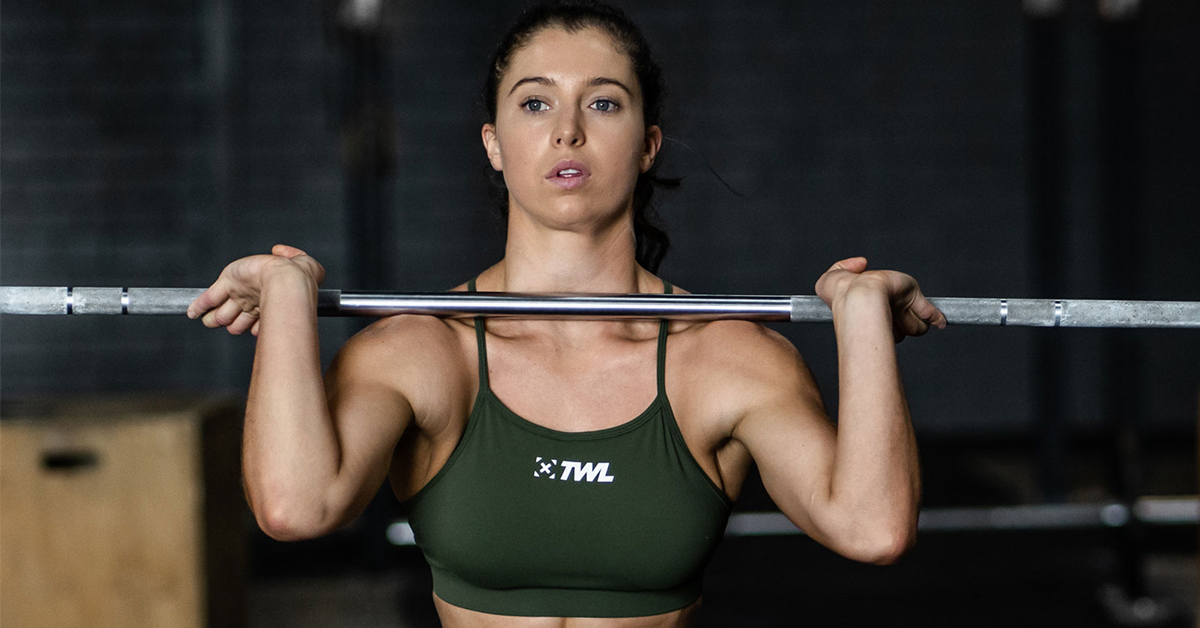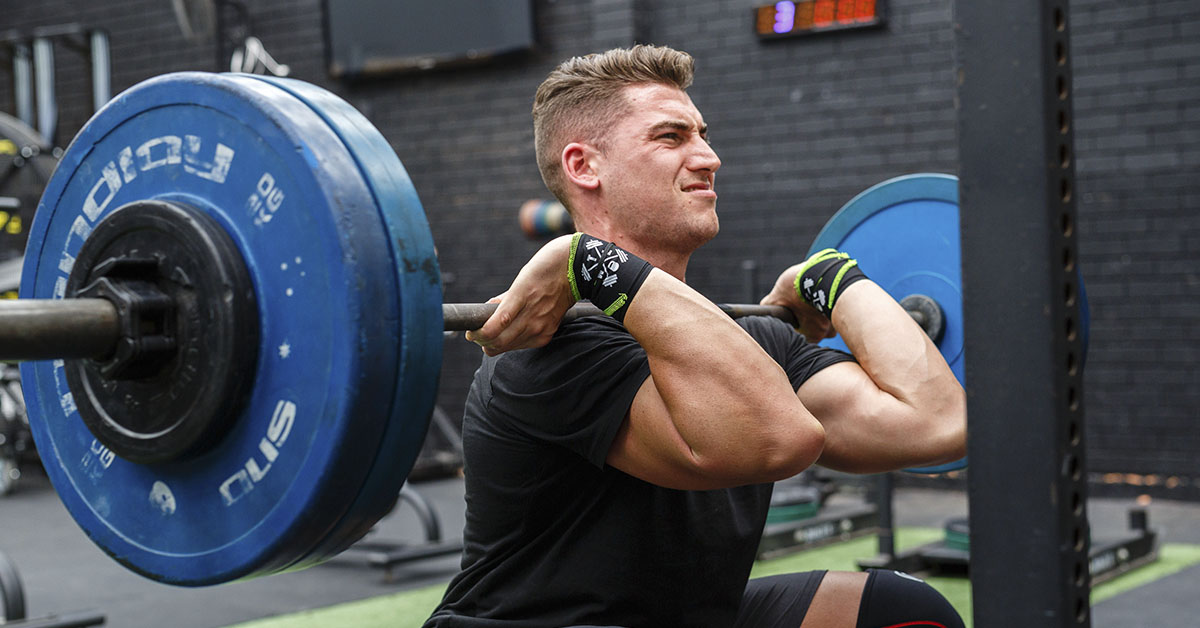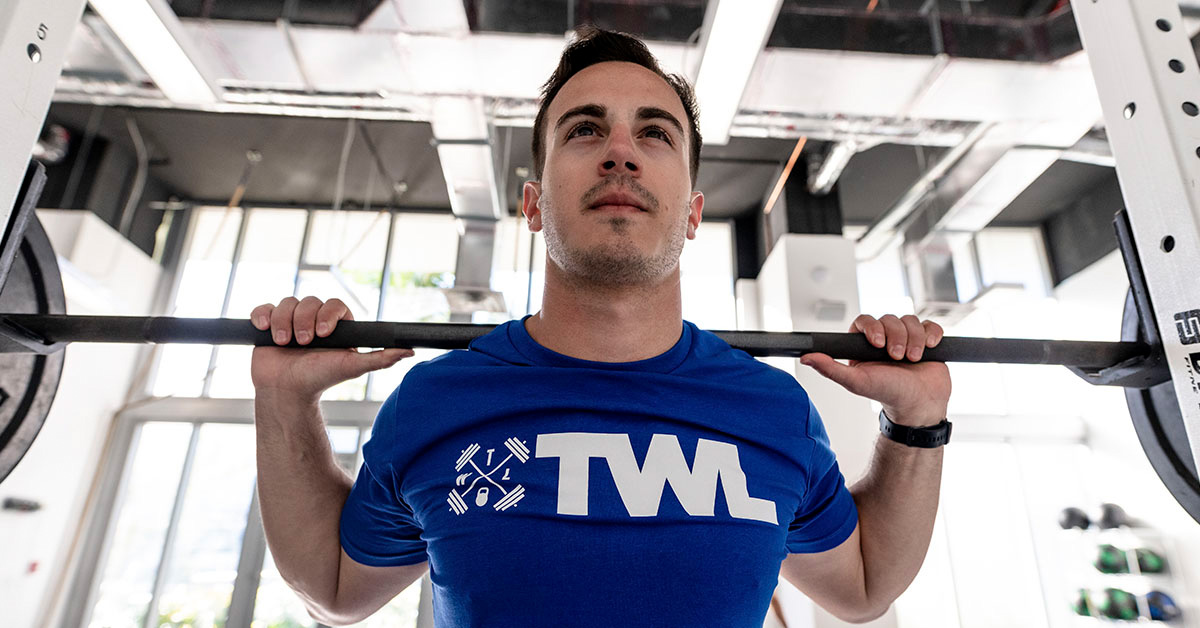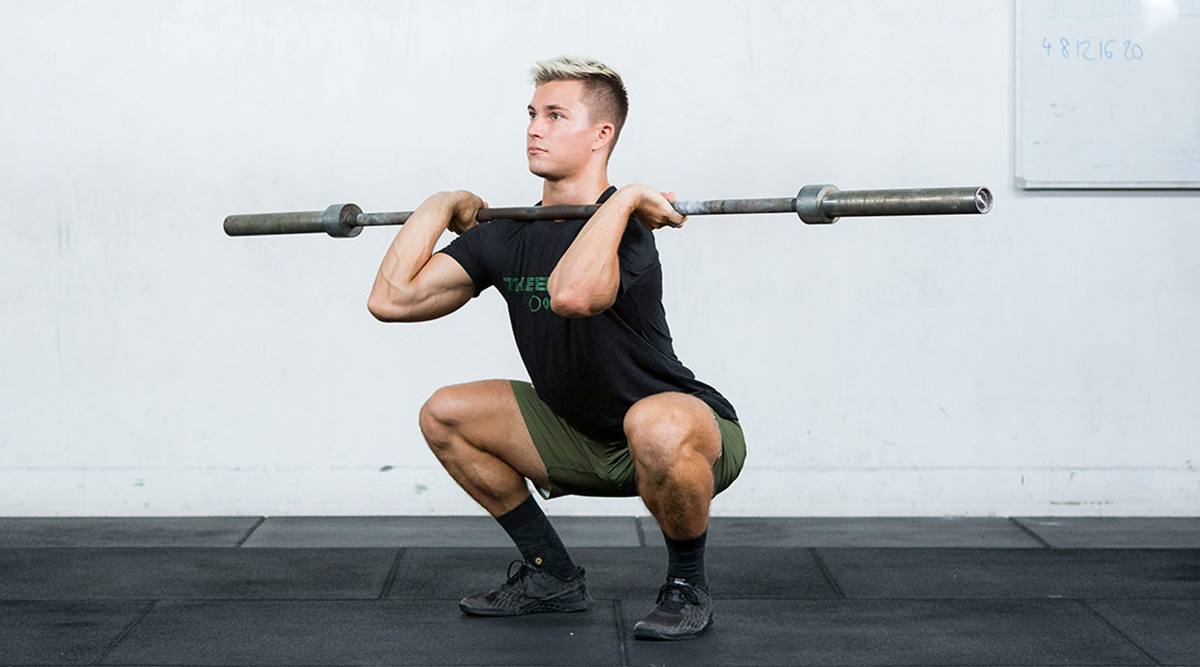The front squat is a staple exercise at the gym. It helps you build strength and improve power and explosiveness, which translates to many other things you do in your training. What does the proper front squat form look like? What are the benefits of front squats, and which muscles are worked? Importantly, what types of front squat variations can you incorporate into your programming?
Let’s dive right in!
How to Front Squat
Let’s begin at the beginning.
The front squat is largely self-explanatory: It’s a squat with the barbell in the front rack position. Here’s how you can do it.
- Start with the barbell in the rack. It should be around the middle of your chest.
- To assume the front squat grip, place your hands just wider than shoulder-width. This will be approximately a thumb’s length off of the knurling.
- Step into the bar and slightly bend your knees to get the bar into position on the “meat” of your front shoulders.
- Think of pushing your elbows as high in front of you as they’ll go. This is where front squat wrist mobility comes into play.
- Drive up, lifting the bar out of the rack, and take one step backward with the barbell in your front rack position.
- Place your feet approximately shoulder-width apart. Your toes should be pointed slightly outward.
- Take a deep breath in and hold it.
- Bend your legs and send your hips down to lower into a squat. Think of pushing your knees out as you do so.
- Keep your eyes either straight ahead or slightly up. If you look down, your elbows and torso are going to follow and you’re likelier to cave in.
- Squat as low as you can while maintaining an upright torso and pushed-out knees.
- Stand up out of your squat and exhale. This is one complete rep.
Here’s what it looks like.
If the front squat is new to you, start with air squats. Then, clasp your hands behind your head and try it again. This helps you start to mimic a front squat. After that, move to a PVC pipe, an empty barbell, and a lightly loaded barbell. This progression will help you safely get comfortable with proper form and execution.
Now that you know how to front squat, let’s get into a few front squat benefits.
What are the Benefits of Front Squats?
You might think that front squats (and even squats in general) only build strength in your legs. Guess again! In large part, front squats are an upper-back workout and, truthfully, target even more than that.
Here are some of the front squat benefits.
They Build Serious Strength in Your Entire Lower Half
Your quads, glutes, and hamstrings are all going to get a killer workout — and these are just some of the front squat muscles worked. Remember that this isn’t just about becoming stronger. It’s also going to make you faster and more powerful.
Let’s keep going!
Front Squats Improve Your Core (and Upper-Back) Strength
Think about it. Your core and upper back (including your traps and erector spinae) have to work really hard to keep you stabilized, keep the elbows and chest up, and stop you from caving in under the weight of the barbell.
When you think of a core exercise, your mind likely goes to sit-ups and crunches. But in truth, front squats are excellent for building core strength.
Shop Now
Your Mobility Will Improve
You can’t perform a squat with solid form without having the mobility to do so. Hip mobility and ankle mobility play a huge role in this movement. Front squats are an excellent chance to work on this.
By the way, if you need help in this department, check out our blog on how to improve squat mobility.
These front squat benefits are just scratching the surface. As we mentioned before (and we want to highlight it again), these pros will translate to other things you do in the gym. The Olympic lifts, other types of squats, box jumps, burpees, and a number of other movements and exercises will all feel easier as you work on the front squats.
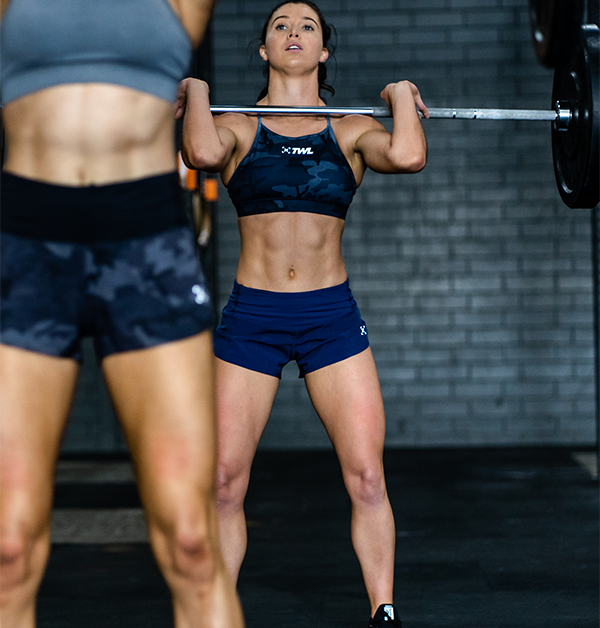
Front Squats vs Back Squats: Which is Better?
Great question! The answer? Neither.
Here’s the thing. As opposed to comparing the two and looking at it as front squats vs back squats (which is understandable!), look at them as two separate movements. While there is some overlap — especially when it comes to the front squat vs back squat ratio — each squat offers unique benefits. So, which one should you be doing? Both! Consider alternating between them throughout the week.
Keep in mind that because of the positioning, you’re likely going to be able to back squat more than you front squat. This does not mean that back squats are more beneficial! In a nutshell, it’s because we can support more weight on our back than we can on our shoulders.
Front Squat Variations to Spice Up Your Programming
There are all sorts of ways to switch it up. If you want something different but also want to keep the barbell in the front, try zombie squats or Zercher squats.
If you really want to change things up, try swapping out the barbell for dumbbells or kettlebells.
You can hold a single dumbbell/kettlebell in front of your chest and opt for goblet squats.
Or you can hold one in each hand. Keep them down by your sides or on your shoulders. Or, if you’re a mobility pro, lock them out overhead!
Need more inspiration? Check out our blog on challenging squat variations.
Front squats may seem simple, and in some ways, they are. However, don’t underestimate them — they pack a lot of punch!

